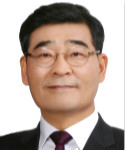| Biography | |
|---|---|
 Prof. Byung-Teak Lee Chonnam National University, Republic of Korea |
|
| Title: Realization and application of highly conductive and highly transparent multilayer films for the next generation optoelectronic devices | |
| Abstract:
Electrode materials with very high conductivity and very high transmission at the wide wavelength range(from IR to deep UV) are being actively studied as an essential part of the next generation optoelectronic devices, such as the UV-LED’s, the UV photodetectors, and the high efficiency solar cells. In this presentation, design, fabrication, and application of the high-performance transparent conductive materials with the oxide/conductor/oxide multilayer structures will be discussedin detail. The optimum oxide/metal/oxide structures studied in this work showed excellent properties for the UV LED application, with an UV-C energy bandgap (~6.0eV), excellent electrical properties (resistivity ~1.7×10-4 Ωcm) and optical transmittanceof ~90% over the visible wavelength range and ~78% over the UV wavelength range. It was also observed that the optimum multilayer films of an oxide/oxide/oxide structure result in high transmission at the long wavelength IR region and very high mobility and conductivity at the same time, essential properties for the high efficiency solar cells. Results of application of these films to the fabrication of the optoelectronic devices, as well as detailed mechanism of the observed phenomena, will be discussed during the presentation.
| |
| Biography:
Byung-Teak Leeis a Professor at the Department ofMaterials Science and Engineering of Chonnam National University, Republic of Korea. He has been actively working on the characterization, processing, and growth of compound semiconductors and transparent oxide materials after receiving a PhD degree from the University of California at Berkeley, and has published more than 145 papers in the indexed international journals. Currently, he is leading the Photonic and Electronic Thin film Laboratory, designated by Korean government as one of the National Research Laboratories and as the BK21 Core Research Laboratory. He is a member of the National Academy of Engineering of Korea.
| |
